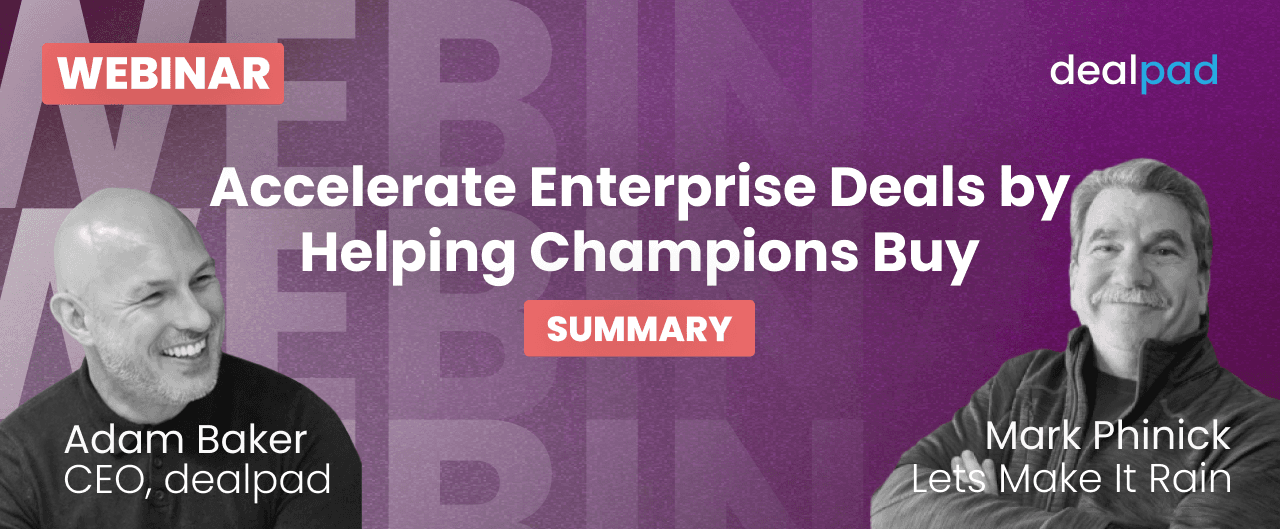The Power of Buyer Engagement: Strategies to Keep Prospects Hooked Throughout the Sales Cycle
Oct 17, 2024
|
4
min read
The Power of Buyer Engagement: Strategies to Keep Prospects Hooked Throughout the Sales Cycle
In today’s fast-moving business world, keeping prospects engaged throughout the sales cycle is more challenging than ever. With countless distractions and competing priorities, buyers can easily lose interest or delay decision-making, leaving your deal stalled. To prevent this from happening, maintaining a consistent level of engagement with your prospects is critical.
But how do you ensure your buyers stay hooked from the initial outreach to the final handshake? This blog will explore key strategies that can help you build lasting relationships, offer real value, and keep prospects motivated to move forward.
1. Understanding Your Buyer’s Needs
Before you can engage your prospects, you must understand their unique challenges and goals. A deep understanding of your buyer allows you to tailor your messaging and approach to address their specific needs, helping them see your product or service as a solution.
Take time to research your prospects, learn about their industry, and ask thoughtful questions that uncover their pain points. This enables you to craft personalized communication and provide targeted resources that demonstrate your value.
2. Timely and Relevant Communication
One of the biggest reasons prospects disengage is poor communication. If follow-ups are delayed, unhelpful, or irrelevant to the buyer’s concerns, the momentum of the sales process can quickly slow down.
Stay on top of your communication by ensuring your follow-ups are timely and provide real value. Whether you’re answering questions, sharing relevant case studies, or offering helpful insights, each interaction should help the buyer move closer to a decision.
3. Providing Ongoing Value
Buyer engagement isn’t just about keeping the conversation going. It’s about consistently offering value. This could be through sharing industry insights, providing a demo that solves a specific problem, or delivering content that’s highly relevant to your prospect's business.
One of the easiest ways to add value is through thoughtful content tailored to the buyer’s interests and stage in the sales cycle. For example, if they’re evaluating multiple solutions, share a comparison guide or ROI calculator to help them make informed decisions.
4. Collaborating with Stakeholders
In B2B sales, you often deal with more than one decision-maker. Engaging all stakeholders early and keeping them informed can help reduce friction later in the process. Create opportunities for collaboration, whether that’s scheduling a group demo, offering shared workspaces, or providing materials that address the concerns of each stakeholder.
5. Leveraging Data for Personalization
Personalization is no longer optional in sales—it’s expected. By leveraging data on buyer behavior, such as which content they’ve engaged with or how often they visit your site, you can tailor your outreach to match their needs and interests.
For instance, if you notice a prospect has opened your email several times but hasn’t replied, you might follow up with a more targeted question or resource that addresses their hesitation. When you personalize your approach, it shows that you’re invested in their success, not just closing the deal.
6. Keeping the Buyer Engaged Post-Sale
Engagement doesn’t stop once the contract is signed. The post-sale experience is just as important in fostering long-term loyalty and turning buyers into advocates. Stay engaged by offering support, sharing success stories, and ensuring your product continues to deliver value as their needs evolve.
The Subtle Role of Technology in Enhancing Engagement
While the above strategies can be implemented manually, today’s technology can make the process much more efficient and scalable. Tools like Dealpad help streamline many aspects of buyer engagement, from automating follow-ups to tracking key interactions. It enables sales teams to focus more on building relationships and providing value rather than managing manual tasks.
By using Dealpad to manage communication, track buyer behavior, and streamline stakeholder collaboration, sales teams can ensure they’re always in sync with the prospect’s needs without coming across as pushy. The key is to use technology as a support system that complements, rather than replaces, human interaction.
Conclusion: Engaging Buyers for Lasting Success
The key to buyer engagement lies in building trust, offering value at every stage, and staying relevant. When done well, these strategies lead to shorter sales cycles, more closed deals, and stronger relationships with customers.
While technology like Dealpad can help enhance these efforts, it’s important to remember that engagement is ultimately about understanding and serving your buyer’s needs. By focusing on providing ongoing value and making the process as seamless as possible, you’ll keep prospects hooked and pave the way for lasting success.



